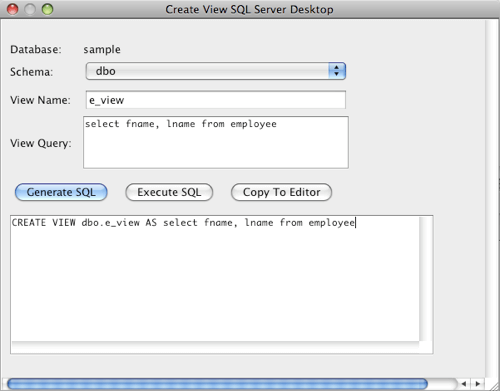

Database accessĪSP.NET Web Pages and WebMatrix toolset provides you an easier way to access and read data from a database. Just like AppStart.cshtml, there is a “_PageStart.cshtml” standard file that runs every time a page is executed.
#Razor create table tool code
The “Page” object in Razor is a special object that you can add new properties inside and access them globally from your code = "Razor" To initialize your global variables, you place your initialization code inside a special page named “_AppStart.cshtml” which runs when the web application starts.

This is my homepage is my content in other file, displayed inside my chosen layout. Using Razor, it is possible create a layout page (similar to master pages in ASP.NET) and use it in your other content pages like below : cs file under the ASP.NET folder “App_Code”.

Additionally you can declare your own custom functions to be used in your document by adding a. The IsPost, RenderPage functions in the code blocks I gave above are some examples to this function set. NET libraries inside a Razor script block, but Razor also has its own specific function set for easier access to some functions. or inside razor specific using any other html markup inside your like this using can also embed server side loops and if statements with (var record in (i>30) You can output variables to your document My message is also possible to output your variables to your document inside a code block like (IsPost) NET variable inside HTML, it is as simple as using it together with operator inside your html code : To embed code in your HTML page using Razor, you simply add your server-side code inside a } myVariable = "Hello World" Today it is the easiest server-side programming model available for you compared to classic ASP and PHP options.īelow I give you a quick summary of ASP.NET Web Pages programming model and Razor syntax. In June 2010, To provide a simpler server-side programming tool for web developers, Microsoft released the Razor scripting and Web Matrix tool set as a part of MVC 3, and called the new single page programming model “ASP.NET Web Pages” (Yes, “Web pages”). If you are a hobby web developer and create web applications only to provide content in your own websites, writing ASP.NET web forms and code behind files, or model view and controller code for your single web page could be an overkill. While the new ASP.NET models brought many new possibilities and made it easier to create enterprise web applications, the simplicity of legacy ASP was left behind. NET framework and ASP.NET in the late 1990s, the legacy HTML embedded single page web application model of ASP is replaced by the Web Forms (and later ASP.NET MVC model).


 0 kommentar(er)
0 kommentar(er)
